The Winter White Hamster is a dwarf hamster, best known for the change in the color of its fur during winter. This pocket pet is easy to care for and therefor ideal if you have limited time and space. It’s also the most sociable of the hamster species and can provide you with hours of entertainment.
In this article we’ll have a look at some fascinating facts about the Winter White Dwarf, or Djungarian, hamster.
We also share everything you need to know about Winter White Hamster care. How to feed this little furry creature, provide them with the ideal environment, and how to make friends with them.
We discuss the health issues which a Winter White Dwarf Hamster might develop and how to recognize when your pet isn’t well.
But first let’s take a look at the background of this interesting little fellow with the color-changing coat.
Winter White Hamsters
The Winter White hammie is native to Russia. It’s is commonly found across its native habitat – including the wide open spaces of Mongolia, Kazakhstan, Manchuria, and shivery Siberia. Here they hide away in cosy burrows up to three feet deep.
In its natural habitat this hamster’s coat turns white during winter – hence the name Winter White Hamster. The switch over is nature’s way of protecting these little guys and gals. Once the color change takes place, they’re able to blend into the snow all about them, fooling potential predators.
Phodopus Sungorus it this hamster’s scientific name. It’s also often called the Winter White Dwarf Hamster due to its diminutive size.
You might also hear them referred to as Striped Dwarf Hamster, Djungurian Hamster, Russian Dwarf or Siberian Hamster. Even Hairy-Footed Dwarf Hamsters, because their tails and feet are covered with hair which isn’t the case with other hamster species.
So how does the Winter White Hamster differ from other hamster species?
Winter White Dwarf Hamster size and features
There are two basic types of hamsters, but both are known as “pocket pets” because of their small size.
The better known Syrian, or Golden, Hamster reaches up to 7 inches long. In contrast, the Djungarian hamster is about half this size.
They grow to approximately 2-4 inches long and they weigh in at around one to one-and-a half ounces. And then they still lose weight in winter!
The Winter White Dwarf Hamster has a rounded shape almost like a tiny furry ball. Their tail is so short that it all but disappears when they sit down.
They have furry little feet and a dark stripe running across the top of their body. Their eyes are normally black – if their eyes are red it means that they’re an albino.
Their colour also distinguishes them from other hamster species.
Winter White Hamster colors
The usual color of the Winter White Hamster’s coat is dark to light brown, with the distinguishing dark stripe running along their back. Facial fur is gray to brownish. In the summer this coloring allows them to blend in with the earthy tones of their natural environment.
You do find many other natural Winter White Hamster colors, including pearl and sapphire. The pearl hammie is a gorgeous creamy white. The sapphire hamster has a lovely blue-gray cast to its fur and their ears are grayish and edged in black.
As winter sets in, with shorter daylight hours and the world covered in snow, the Winter White Hamster transitions it fur from brown to white.
This unique feature has been a topic of great interest to scientists over the years. They’ve found that both genetics and the hormone prolactin play a part in the color change.
Studies have also shown that the length of daylight, rather than temperature changes, causes the cross-over. There needs to be fewer than 14 hours of daylight for the fur to change color.
While a domestic Winter White Hamster’s fur coat can change in the winter, the degree of change varies. Some hammies will become completely white while others may have slight patches, spots or bleaching of certain areas only.
The next question you might ask is: How well has this hamster species adapted from the wild to becoming household pets?
Winter White Hamster behavior
Of all the hamster species, Winter White Dwarf Hamsters are known to be the most tameable.
Consistent daily handling from an early age is important if you want your little hammie to become a well-socialized pet – friendly, curious, and self-assured.
But you should also take note that at around 1-2 months of age, just like a human toddler, they want to nibble everything that they come across – and this might just as well be your finger.
Otherwise hamsters are only likely to bite when they’re scared. Speak to your hammie before just grabbing them from above, and frightening them into defence mode.
Cup your hands gently around your hamster to pick it up or even let them first climb into a toilet paper roll. Once in your hand they’re tamer and eventually they’ll get used to your voice and can be happily picked up and played with.
But Don’t Lose Them!
Be warned though, the Winter White Hamster is known for slipping from a hand in the blink of an eye. Not only can they hurt themselves, but it could have your family spending hours on hands and knees trying to find the little critter.
Winter White’s are an active species and love playing, for which they need plenty of space. Finally, take note that all hamsters love to chew, chew, and chew! This behavior is important to keep in mind when buying toys and cages, which we’ll address in just a bit.
Now you may be wondering if the Djungarian Hamster is a good pet for children.
Winter White Dwarf Hamsters as pets
Whereas the Syrian Hamster is mainly awake during the night, the Winter White is most active at dawn and dusk and is sometimes even awake during the day. This makes them an ideal choice of hamster for children.
They’re best for older kids since care must be taken in handling them due to their size. Teach your child that if the hammie squeaks or hisses when they try to play with it, this is a signal to give them some space.
It can mean that they’re scared or simply want to be left alone right then. In this case, honor your hamster’s wishes for “me” time. Another thing to keep in mind is that hamsters don’t like loud noises, so a calm approach and talking in a soothing tone will help to calm their bestie.
Can Winter White Hamsters live together?
Winter Whites are not as territorial as some hamster breeds, so when they’re socialized together from a young age they should remain amicable. Although it’s always up to individual temperaments as to whether or not hamsters will happily cohabit.
Many owners report that a mated pair are compatible, especially when caring for their offspring together. Furthermore, one male and two or more females could live together happily. Conversely, same-sex pairs and big groups may experience more friction.
After all, this is not an arrangement that is natural in the wild. Due to perceived competition, fighting and upset can take place, even turning lethal.
Another thing to keep in mind is that Winter White Hamsters do not have a fixed breeding season. They can even become pregnant immediately after giving birth!
When it comes to Winter White Hamster care, its needs are minimal but important.
Feeding your Winter White Dwarf Hamster
Hamsters are omnivores, eating both plant material and insects in the wild. Vets generally recommend that your hammie has access to a high quality commercial rodent food all the time.
You can supplement this with small, bite-sized pieces of fresh veggies and fruit. The portions must be very small because too much can give them upset tummies and, if they decide to store this fresh food, it can rot in their cage.
Among the fruit and veggies you can safely feed your Winter White are apples, kale, peas, cauliflower, cucumber, zucchini, and bananas. In addition, hammies love to crunch down on carrots, broccoli, and celery!
Vets warn against feeding your pet hamster a diet with a lot of seeds. Seeds are high in fat and low in nutrients – and domesticated hamsters are prone to becoming overweight.
Choosing a Food Dish
You’ll probably want to buy a small food dish for your hamster in order to prevent it from overeating, and to free up floor space.
A ceramic bowl is preferable over a plastic dish for your hamster. Why is this? For one, a ceramic bowl is chew-proof! It’s also harder to tip over and ceramic is considered to be more hygienic than plastic.
Water
As for any pet, your hamster must have access to fresh water all the time. The best option is to get a water bottle with a drinking tube that’s fixed onto the side of the cage.
You should replace the water daily and make sure that the tubes aren’t clogged up. Dehydration can kill a tiny pet like a dwarf hamster very quickly!
Besides food and drink you need to provide your you furry bundle with an environment that will keep him happy and healthy.
The Hamster Home
The Winter White Hamster is an active species. They enjoy dashing about and playing so plan on giving them plenty of space to run about and things to play with – and chew.
Your hamster will need a well-ventilated cage that is safe, escape-proof, and out of direct sunlight. It must be big enough for your pet to play in and you’ll also want to get a cage that’s easy to clean. Those designed for mice are usually big enough for a dwarf hamster.
When it comes to cages there are three basic choices: glass, plastic, and wire. Winter White Hamsters have a lot of fur and are actually much smaller than they appear – they’ve been known to easily slip though the sides of wire cages.
You’ll need to create a cave for your hamster to sleep in, inside its cage. There are different types of boxes on the market, but you can also just use a flower pot or a cardboard box.
If you want to spoil your pet there are some really fun cages with built in levels, tunnels, wheels and look-out points.
Choose the Right Bedding
Lastly, your hamster’s living space requires hygienic and comfy bedding. You should remove soiled bits daily and clean the cage out at least once a week.
Stay away from deodorized or dusty bedding as this can cause lung irritation. Also avoid nesting materials that can separate into strands that your hamster can get tangled up in – like cotton wool or other fluffy bedding.
To learn everything you need to know about hamster bedding we recommend the article Best Hamster Bedding.
Once you’ve got your hammie’s cage all sorted out, you’ll need to plan carefully where to place it.
Where to put the hamster home
The cage must be out of drafts or direct sunlight. Obviously it should also be out of reach of your inquisitive, and possibly predatory, dogs and cats.
Preferably your hammie should live in a room where the lights go off at about the same time every day to keep their natural body clock in sync.
Hamsters are also very sensitive to high-frequency sounds that we can’t hear. Keep their cages away from television sets, computer screens, air conditioners and running water.
Finally, your active critter will also need lots of things to keep them busy – and chewing safely.
Hamster chews and toys
Hammies are energetic creatures who need and enjoy plenty of exercise each and every day.
So one of the most important things to provide in their living area is an exercise wheel. Avoid wire wheels that they can get their little feet hooked up in and possibly injured.
Hamsters also love tunnels that they can run through or hide in and there are many options available in the marketplace. However, for the tiny Winter White Dwarf Hamster a cardboard toilet roll will also do the trick perfectly.
Chewy Treats
As we mentioned earlier, hamsters love to chew and gnaw. They need to do this because their teeth never stop growing!
So along with a well-balanced diet, be sure to provide your fur baby with lots of chewy treats and toys. Otherwise your little one will take to chewing his cage, bedding, and anything else they can get their teeth into.
Just be sure to stay away from poorly made hamster toys and accessories. Rather collect ordinary little wooden twigs or untreated blocks of wood for them.
Just avoid cedar wood at all costs. Some Djungarian hamsters are very allergic to cedar wood and can even die from it.
Some Guides to Help!
For a few ideas of the toys you can get for your pet have a look at the article Best Toys for Hamsters – the Big Hamster Toy Review.
Providing you hamster with the correct food and the right environment gives your pet the best chance of living a happy and healthy life. But just like any other living thing, hamsters do sometimes develop health problems.
Djungarian Hamster health
Winter White Dwarf Hamsters are quite hardy but it’s important to check them every day. Signs that they’re unwell can be very difficult to spot in this little creature if you don’t keep a close eye on them.
What you’ll probably notice first it that your hammie’s behaviour has changed. They might be sleeping more, not eating much, or not running on their wheel and playing as usual.
You should however also be aware that during the winter months, Djungarian hamsters can enter daily torpor – a condition close to hibernation. This is genetically programmed and occurs irrespective of the temperature and food availability.
Other signs that your pet might be ill include weight loss, sitting hunched up, fur that’s matted or falling out in patches and dull eyes. More obvious signs are difficulty breathing, diarrhea, a runny nose, or limping.
If you notice any of these signs it’s a good idea to have your furry little friend checked out by your vet.
Common Health Problems
Problems which vets commonly see in hamsters are dehydration and malnutrition – unfortunately often as a result of neglect. Another common problem, particularly in young hammies, is wet tail. This is a potentially fatal diarrheal condition.
Hammies can catch a common viral cold, and suffer from parasitic and fungal infections. They can get wounded when they injure themselves, or fight amongst each other. Even tiny hamster wounds can become infected resulting in painful abscesses that require medical attention.
Hamsters are susceptible to dental problems and you can suspect this if you notice dampness around their mouths. Mouth injuries are also common – especially wounds to the cheek pouches from chewing food or bedding with sharp points.
Other Potential Problems
Hamsters often develop tumours and the risk increases with age. Unfortunately the occurrence of cancer is five times higher in Winter White Hamsters than in Syrian hamsters.
While this may or may not influence your buying decision, it’s important to know that the incidence of cancer is higher among females because of the multiplicity of cancers affecting the reproductive tract.
In addition, hamsters are susceptible to bladder stones within the urinary tract but they can be removed by an experienced veterinarian.
Now you might be wondering how long you can expect your hammie to enjoy his life with you once you bring him home.
Winter White Hamster lifespan
The domesticated Winter White hamster lifespan is on average 2-3 years.
If that sounds like a relatively short time span, consider that when they’re out in their wild habitat, these creatures may only live up to a year or less!
Should I buy a Winter White Dwarf Hamster?
Pocket pets, like hamsters and guinea pigs, are a solid choice for pet lovers who have limited space or simply want to add an adorable, small animal to their household menagerie. Winter White Hamsters are easy to maintain and inexpensive to own.
When compared to other hamster breeds, the Winter White Hamster has a mild temperament and thrives in a domesticated environment. When they’re properly socialized, they enjoy interacting with their favorite human and being handled.
These busy little guys are more than able to keep themselves entertained as the day passes. You just need to make sure that they have enough food and water, toys, and a safe place to hang out and call their own.
With your attentive care your hammie should thrive and provide you with tons of enjoyment and entertainment.
Do you have a Winter White Hamster? If so we’d love to hear about your experiences with this unique little animal in the comment section below.
This article has been extensively revised and updated for 2019.
Resources
- Animal Hospitals-USA. Hamster Diseases, General. Animalhospitals-usa.com.
- Animalia. Djungarian Hamster. Animalia.bio.
- ASPCA. Hamster Care. The American Society for the Prevention of Cruelty to Animals.
- Donnelly, T. Hamsters. Merck Veterinary Manual.
- Duncan, M.J. & Goldman, B.D. 1985. Physiological doses of prolactin stimulate pelage pigmentation in Djungarian hamster. American Journal of Physiology.
- Heldmaier, G. & Steinlechner, S. 1981. Seasonal control of energy requirements for thermoregulation in the djungarian hamster (Phodopus sungorus), living in natural photoperiod. Journal of Comparative Physiology.
- Hess, L. & Axelson,R. 2019. Owning a pet Hamster. VCA Hospitals.
- Mcguire,J. 1993 Phodopus Sungorus (Russian Dwarf Hamsters).
- RSPCA. A suitable environment for hamsters. Royal Society for the Prevention of Cruelty to Animals.

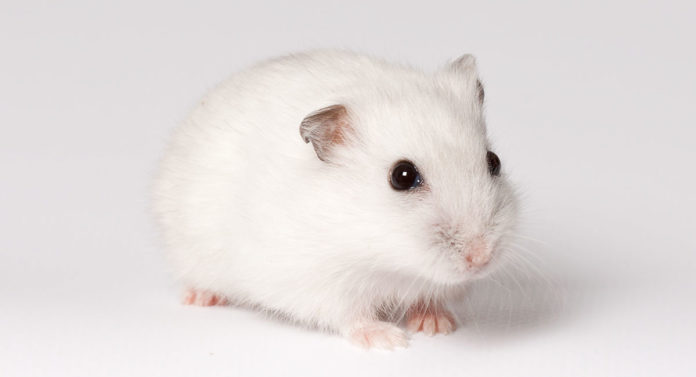
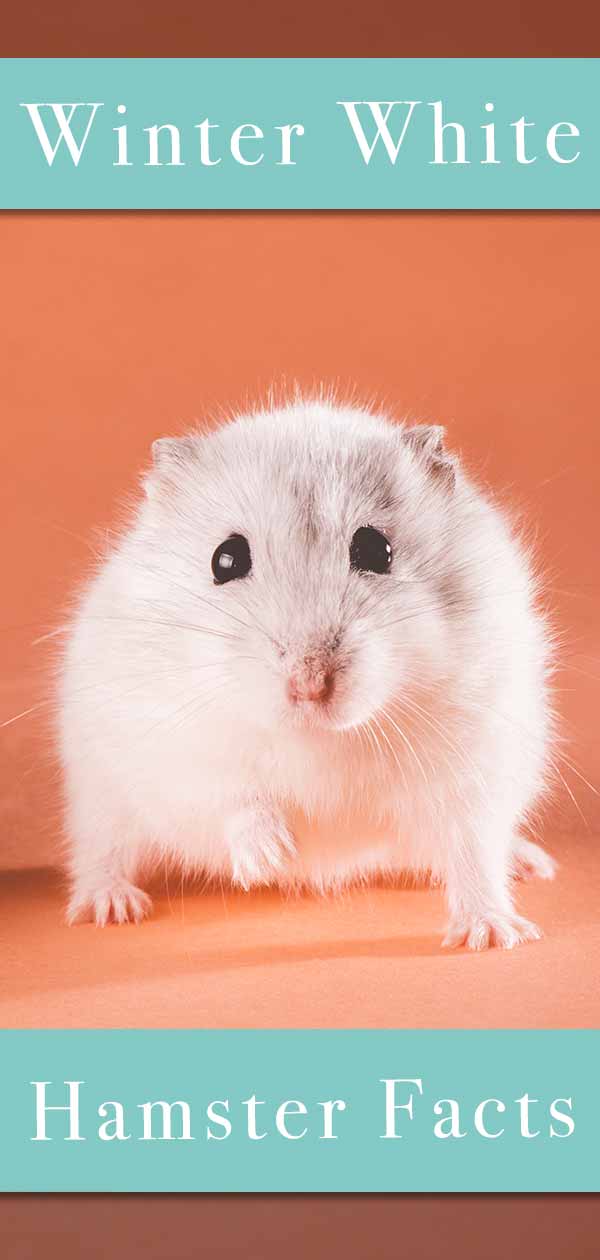
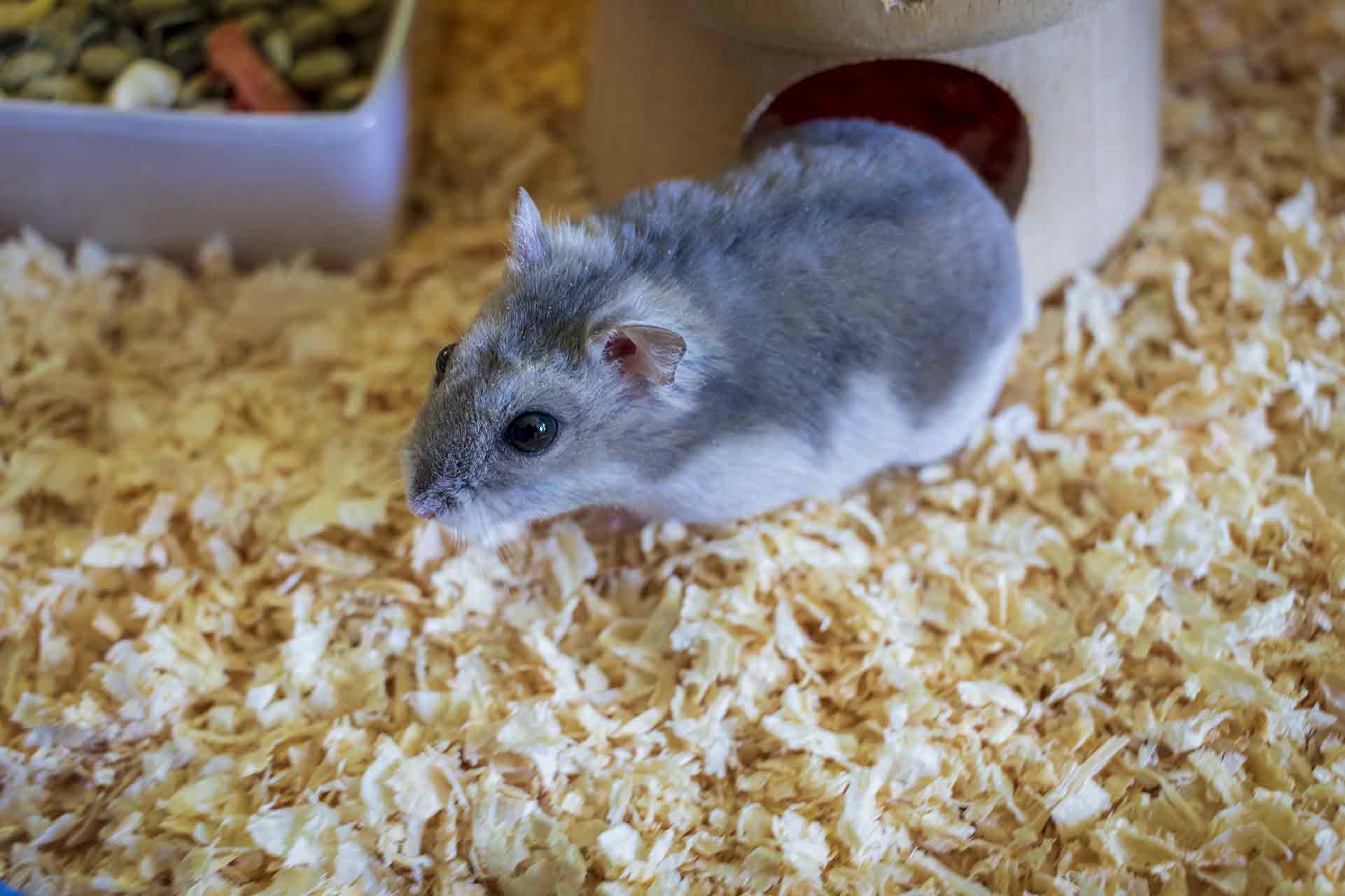
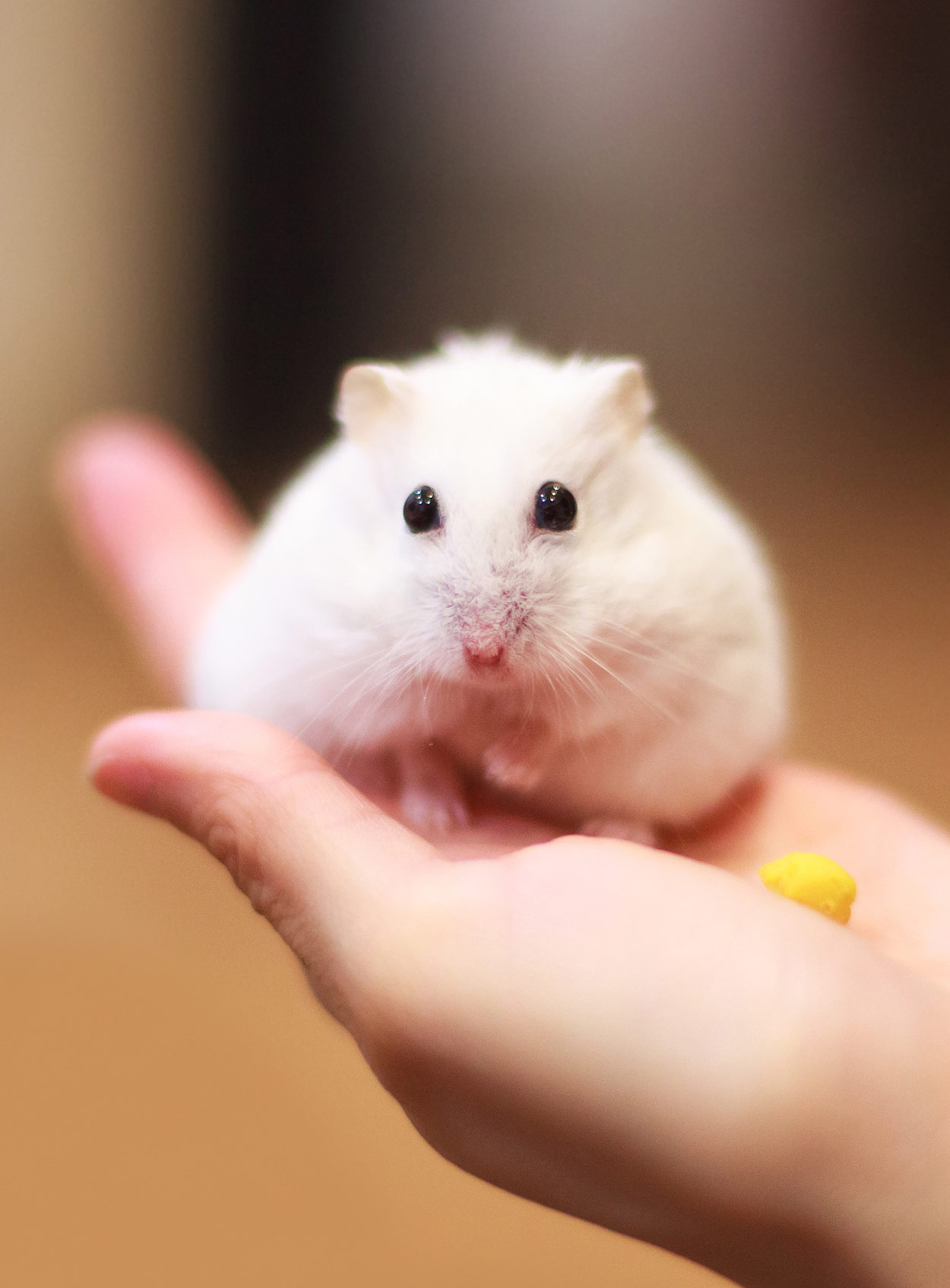
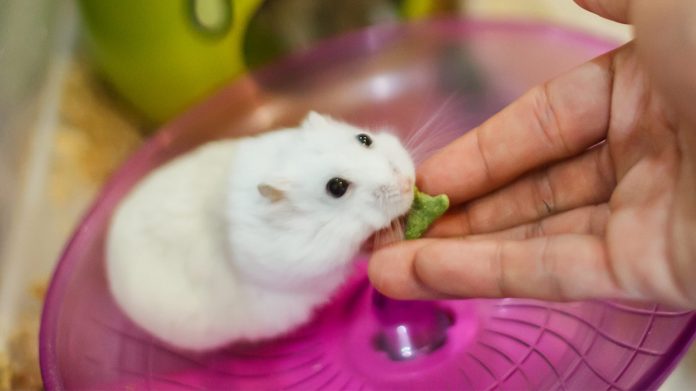
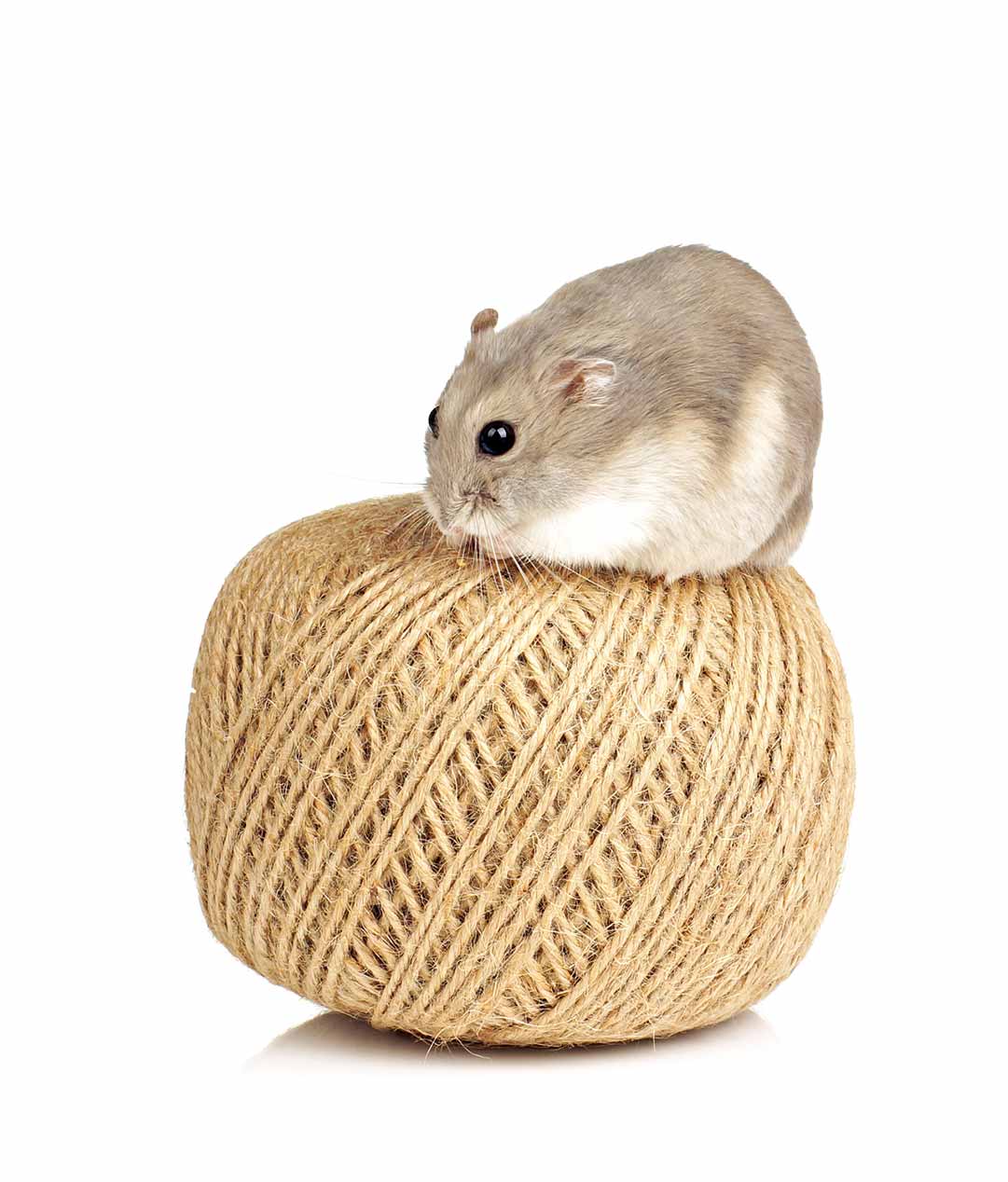
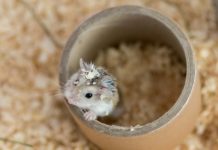

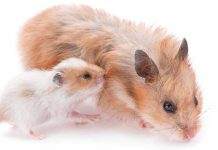











Hello there! I bought a winter white dwarf hamster last Monday. I assumed it was a male, but I’m wondering if maybe it’s a female based on behavior and was hoping you could help me out. He/she bites me with every opportunity, and not in a scared/cowardly way. It actively seeks me out to bite me! As soon as I come to the front of the cage, he/she immediately comes to the front and starts climbing on the cage. If I even put my finger up just for them to smell it, it starts biting me. I’ve done a lot of research to make sure I’m doing things the right way and not scaring it, but they just won’t calm down! Any advice or opinion you have would be so helpful. Thank you!
Mine too! Just got him 3 days ago
I just seen that my winter white has red mites how may I get rid of them with house hold cleaners
I have 2 winter whites I bought from a pet store chain called Pet Supply Plus in Pennsylvania about 2 years ago. They’re both all white, 1 has a gray for on her head both female. The 1 with the for is smaller and I just had to remover her as the bigger one was biting her in the rump. Then I noticed she had a tiny bump above her front page that wasn’t healing like her butt was. It was growing. It’s a tumor. NoW the 2nd one has a tumor in her chest growing. They’re both still playing, earring and all but I feel so bad, especially after reading this article that winter whites get rumors 5as more than any other hammie. But I know I’ll never own another winter white again. Even with months of TRYING to socialize, nope they both want no parts. They’re cute as can be but nope….I’ll get a a regular dwarf hammy again.
I just bought one last week
lucky
I want to purchase a hamster the last one I had just died. I had him for seventeen months, can lavender bedding for hamsters hurt them, and can you house two winter whites together.
but, for me my hammie came out plane black plz tell me it rare
this looks exactly like my baby hampster
I’v had my hamster for over a year not and it is starting to get a little aggressive, i don;t know why. I feed him, give him “me” time, I am gentle and try to take her out as much as possible Is it possible she does not like me?
health problems and is in pain.